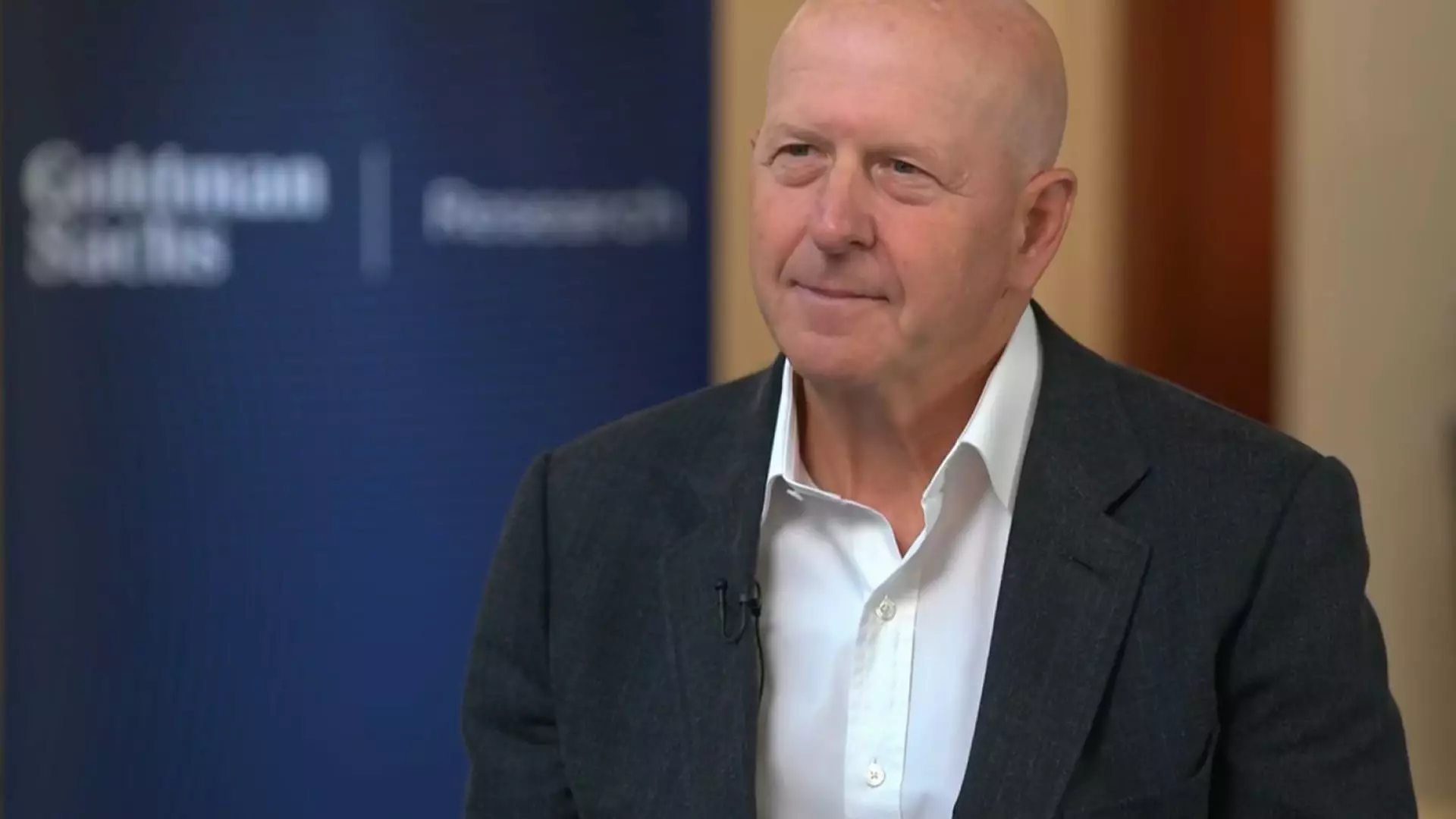In a startling display of financial prowess, Goldman Sachs has posted first-quarter results that not only exceeded analyst projections but did so with remarkable flair. As the financial markets enact what can only be described as a rollercoaster ride influenced by geopolitical uncertainties, Goldman has emerged from the fray with its earnings per share hitting an impressive $14.12, crushing the estimated figure of $12.35. With revenue clocking in at $15.06 billion against an expectation of $14.81 billion, it’s a remarkable testament to the bank’s adaptability.
However, the depth of this performance reveals a complex narrative. While the firm celebrates a 15% increase in profit year-over-year, reaching $4.74 billion, the underlying reasons paint a more mixed picture. This growth has largely been buoyed by a robust uptick in equities trading revenue—up 27%—which has been a haven amid a barely stable climate for asset management and investment banking. It’s worth highlighting that while equities may have thrived, other sectors have not shared the same fortune, prompting a critical examination of Goldman’s strategic positioning.
Contrasting Sectors: A Tale of Two Strategies
Within the structure of Goldman Sachs, there exists a striking contrast between its thriving global banking and markets division and the ailing asset management sector. The former reported a 10% revenue increase to $10.71 billion, driven primarily by soaring equities trading pretenses. Yet, against this backdrop, the fixed income division lagged, reporting a mere 2% revenue growth, falling short of market expectations and signifying a potential red flag in fixed income investments.
Investment banking has also seen discouraging trends, with fees dropping 8% to $1.91 billion, and this downward spiral raises serious questions about whether Goldman can sustain its historically robust banking identity amid changing economic tides. As external factors—such as President Trump’s aggressive trade policies—continue to create volatility, it becomes essential for banks like Goldman to navigate these waters with both caution and strategic foresight.
CEO David Solomon: The Navigating Ship’s Captain
David Solomon, CEO of Goldman Sachs, stands at the helm of this financial behemoth during crucial times. His recent remarks highlight the stark realities his firm faces amidst these trade tensions. While reassurances were offered — that the institution remains prepared to support clients through turbulent times — the reality beneath these words could be interpreted as a veiled admission of the risks ahead.
Solomon’s ability to maintain investor confidence while acknowledging the unpredictable economic landscape reflects a critical leadership strategy. Analysts are not merely observing the current financial statements; they are looking for insights into client interactions in this chaotic climate. As Goldman’s equity trading triumphs appear to act as a counterbalance to substantial weaknesses elsewhere, the broader implications for the bank’s long-term viability must be assessed.
Market Reactions: A Cautious Optimism
Interestingly, even as Goldman Sachs announced its results, the market reacted positively with shares seeing an early 3% increase in premarket trading. Yet, one must approach this turn of fortune with caution. The financial sector is currently dictated by macroeconomic indicators, particularly as rival banks like JPMorgan Chase and Morgan Stanley report skyrocketing performances buoyed by the same market volatility that has shaped Goldman’s fate.
Despite facing a 14% decline in share value over the year, Goldman Sachs’ quarterly results demonstrate a paradox of both discontent and opportunity—illustrating how quickly financial fortunes can shift in either direction.
As the conversation about corporate client dynamics unfolds, many experts will be taken not just by the figures but by the narratives that emerge from Goldman’s experiences. Navigating these uncertain waters requires savvy, and how the bank adjusts its sails could very well determine its journey forward in an unpredictable economic environment.


Leave a Reply